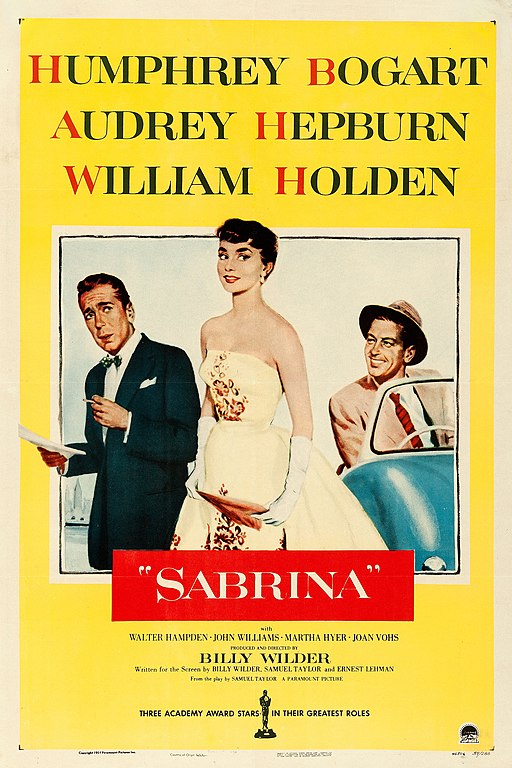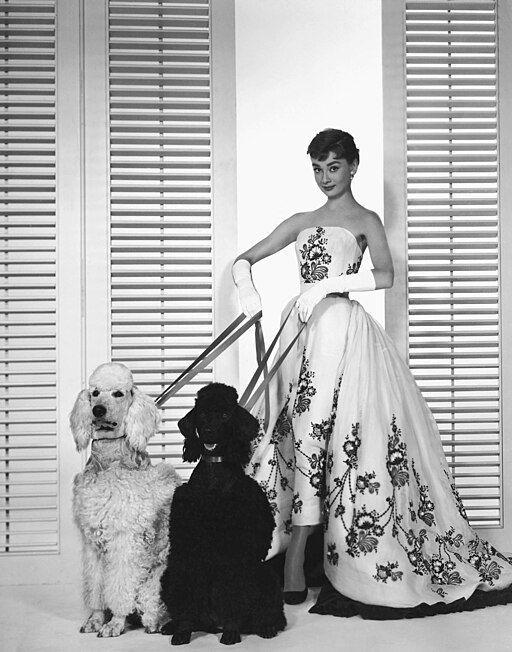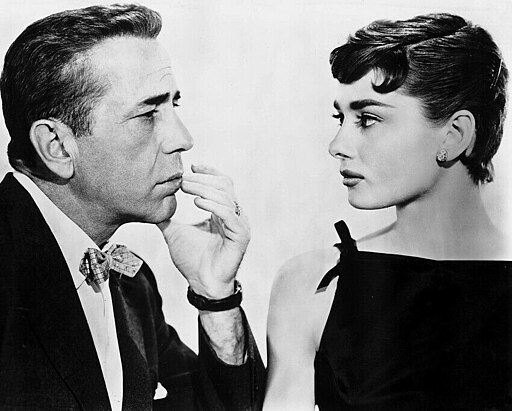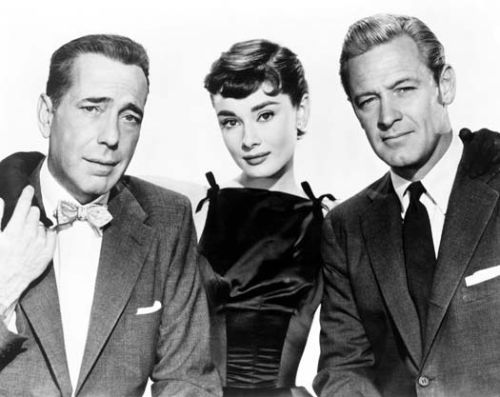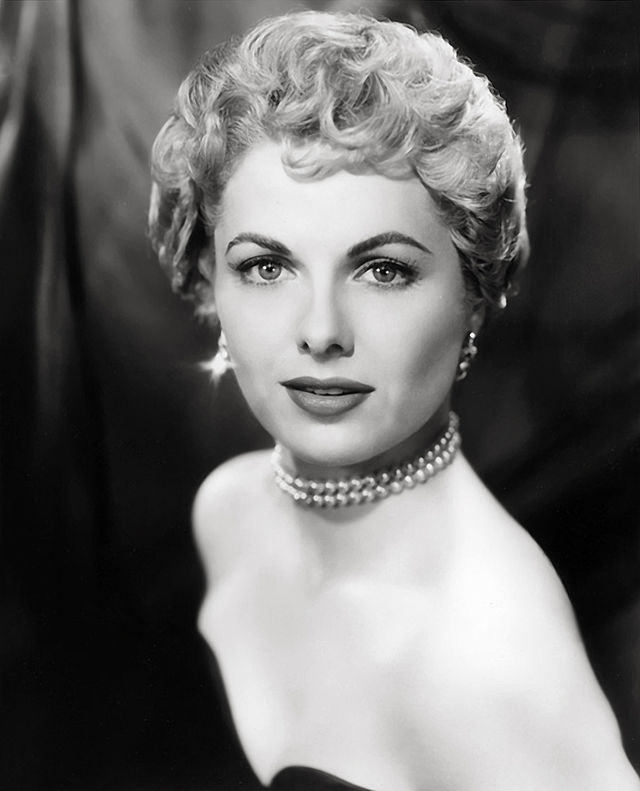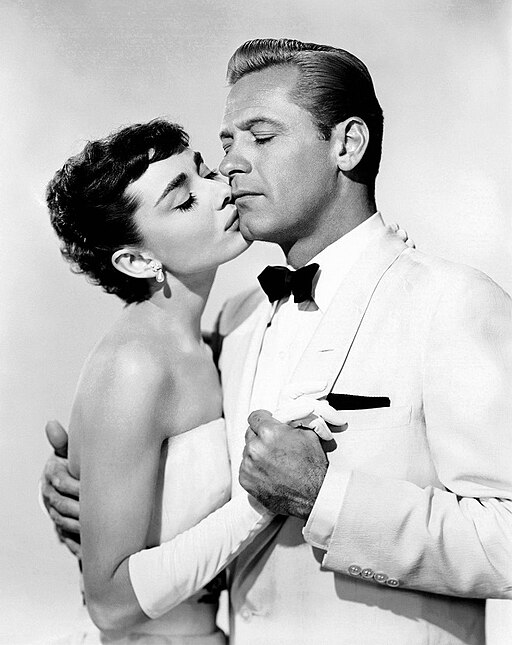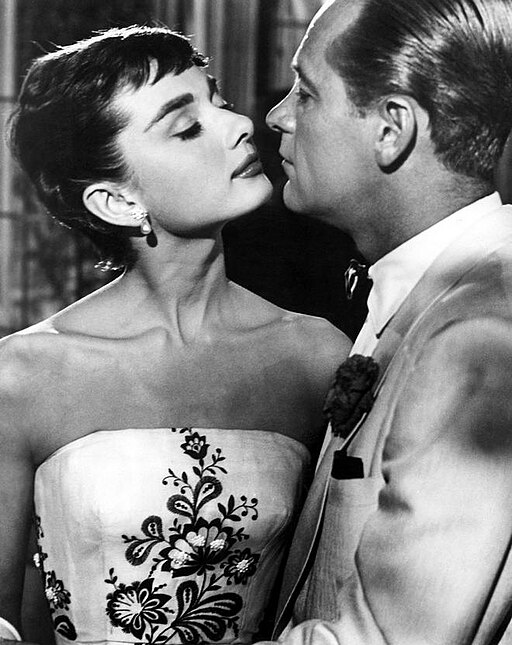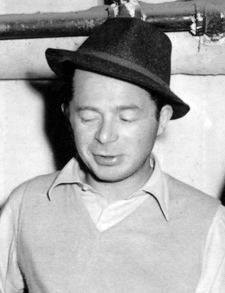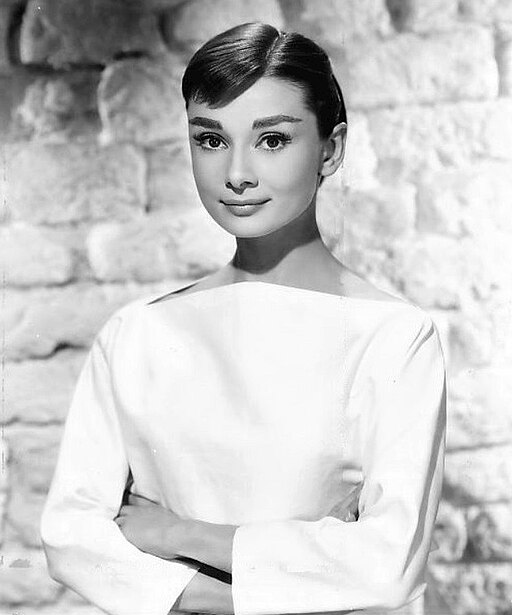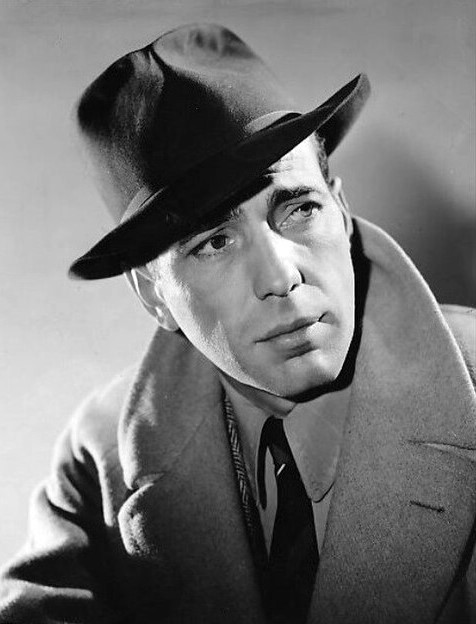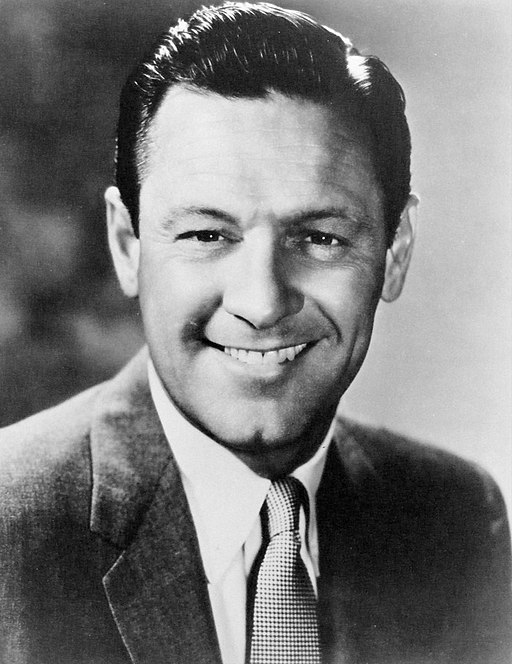Sabrina - 1954
back| Released by | Paramount Pictures |
| Director | Billy Wilder |
| Producer | Billy Wilder |
| Script | Billy Wilder - Samuel A. Taylor - Ernest Lehman |
| Cinematography | Charles Lang |
| Music by | Frederick Hollander |
| Running time | 113 minutes |
| Film budget | $2.2 million |
| Box office sales | $4 million |
| Main cast | Audrey Hepburn - Humphrey Bogart - William Holden |
Sabrina
A charming Cinderella tale, set against a backdrop of class distinctions
"Sabrina" is a classic romantic comedy that showcases the talents of its star-studded cast and the skilled direction of Billy Wilder.
The film is known for its witty script, elegant cinematography, and memorable soundtrack, contributing to its status as a timeless piece in the history of American cinema.
Related
Sabrina – 1954
Summary:
"Sabrina" is a romantic comedy that masterfully blends elements of humor, romance, and social commentary. The story revolves around Sabrina Fairchild, the young and naïve daughter of the chauffeur for the wealthy Larrabee family in Long Island, New York. Sabrina is infatuated with the younger Larrabee son, David, a playboy who barely notices her.
After a stint in Paris, Sabrina returns transformed into a sophisticated and elegant woman. Her newfound allure catches David's attention, complicating his engagement to a woman chosen for a beneficial business merger. The Larrabee family's elder son, Linus, steps in with a plan to redirect Sabrina's affections towards himself to protect the family's business interests.
Unexpectedly, Linus, a workaholic and serious businessman, finds himself genuinely falling for Sabrina. This love triangle leads to a series of comedic and poignant moments, culminating in a choice for Sabrina between a life of luxury with Linus and a more unpredictable path with David.
Analysis:
Themes and Motifs:
- Transformation and Self-Discovery: Sabrina's physical transformation in Paris symbolizes her emotional and intellectual growth. This theme is a nod to the classic Cinderella story, where the overlooked character reemerges as the belle of the ball.
- Class and Social Status: The film explores the rigid social structures of the 1950s. Sabrina's initial unrequited love for David highlights the class divide, while her interactions with the Larrabee brothers challenge these boundaries.
- Love vs. Duty: Linus represents duty and pragmatism, initially approaching Sabrina as a problem to be solved for business reasons. His eventual realization of genuine love for Sabrina juxtaposes romantic ideals against societal obligations.
Characters:
- Sabrina Fairchild: Audrey Hepburn's portrayal of Sabrina is iconic, capturing the character's innocence, charm, and transformation. Hepburn brings depth to Sabrina, depicting her not just as a love-struck girl but as a woman discovering her worth and desires.
- Linus Larrabee: Humphrey Bogart’s Linus is complex, initially detached and calculating, but gradually revealing a more vulnerable and caring side. His transformation mirrors Sabrina's, though it is more internal and emotional.
- David Larrabee: William Holden's David is charismatic yet shallow. He serves as the catalyst for the central conflict but doesn't undergo significant personal growth, contrasting with the other leads.
Directorial and Cinematic Elements:
- Billy Wilder’s direction is subtle yet impactful. He balances the script’s wit with visual storytelling, using nuanced performances and settings to enhance the narrative.
- Charles Lang’s cinematography captures the opulence of the Larrabee estate and the elegance of the characters, particularly in scenes showcasing Sabrina’s transformation.
Cultural Impact: "Sabrina" is significant not only for its story but also for its impact on fashion and cinema. Audrey Hepburn's wardrobe, designed by Hubert de Givenchy, became a style icon. The film's blend of romance, comedy, and social commentary set a high standard for the genre.
In summary, "Sabrina" is a timeless classic that combines a witty script, stellar performances, and sophisticated direction. It's a study in character development, social class dynamics, and the complexities of human emotions, all wrapped in a charming and elegantly executed cinematic experience.
Official Trailer of "Sabrina" from 1954:
Full Cast of “Sabrina”:
- Audrey Hepburn as Sabrina Fairchild
- Humphrey Bogart as Linus Larrabee
- William Holden as David Larrabee
- Walter Hampden as Oliver Larrabee
- John Williams as Thomas Fairchild (Sabrina's father)
- Martha Hyer as Elizabeth Tyson (David's fiancée)
- Joan Vohs as Gretchen Van Horn
- Marcel Dalio as Baron St. Fontanel
- Marcel Hillaire as The Professor
- Nella Walker as Maude Larrabee (Linus and David's mother)
- Francis X. Bushman as Mr. Tyson (Elizabeth's father)
- Ellen Corby as Miss McCardle
- Emory Parnell as Charles - the Butler
- Nancy Kulp as Jenny - the Maid
- Raymond Bailey as a Board Member
- Ralph Brooks as a Party Guest
- Colin Campbell as a Butler
- Harvey B. Dunn as a Board Member
- Kay E. Kuter as a Board Member
- Kay Riehl as a Board Member
- Paul Harvey as a Doctor
- Kay Riehl as a Party Guest
- Marion Ross as a Spiller's Girlfriend
- Charles Harvey as a Party Guest
- Rand Harper as a Young Man
- Fritz Ford as a Party Guest
- Paul De Rolf as a Young Man
- Lennie Bremen as a Waiter
- Bill Neff as a Board Member
- Otto Forrest as the Voice of David Larrabee (singing voice)
- Sam Harris as a Party Guest
- Kay E. Kuter as a Board Member
- Charles Harvey as a Party Guest
- Brick Sullivan as a Policeman
- Jack Chefe as a Chef
- Rudy Rama as a Waiter
Analysis of Billy Wilder’s Direction:
Billy Wilder's direction in "Sabrina" is a brilliant showcase of his unique filmmaking style, marked by a blend of wit, sophistication, and a keen understanding of character dynamics. Wilder, known for his versatility and mastery in both comedy and drama, brings these strengths to the forefront in "Sabrina." Let's delve into a more descriptive analysis of his direction in this classic film:
Narrative Pacing and Structure
Wilder's pacing in "Sabrina" is meticulous. He allows the story to unfold at a pace that gives the audience time to understand and empathize with each character. This pacing is key in romantic comedies, where character development is crucial. Wilder expertly balances moments of humor, romance, and drama, ensuring that the story moves smoothly without losing the viewer's engagement.
Character Development and Interaction
One of Wilder's standout talents is his ability to develop multi-dimensional characters. In "Sabrina," each character is crafted with depth and complexity. Wilder's direction ensures that the audience sees the transformation of Sabrina from a naive girl to a sophisticated woman, and Linus from a business-minded individual to someone capable of deep emotion. Wilder's ability to elicit nuanced performances from his actors, especially in scenes of subtle emotional shifts, speaks to his skill in directing and understanding character psychology.
Visual Storytelling
Wilder's use of cinematography and mise-en-scène in "Sabrina" enhances the narrative. He uses visual elements to reflect the characters' inner worlds and the film's themes. For instance, the contrast between the opulent Larrabee estate and the modest quarters of Sabrina’s father symbolizes the class divide central to the film's conflict. Wilder's collaboration with cinematographer Charles Lang results in a visually stunning film that uses lighting and composition to create mood and underscore narrative points.
Comedy and Wit
Wilder's trademark wit is evident in "Sabrina." He has a unique ability to infuse humor into the script through both dialogue and situational comedy. His direction ensures that the humor feels natural and flows seamlessly with the narrative, never overshadowing the film's romantic and dramatic elements. This balance is a hallmark of Wilder's style and is critical in making "Sabrina" a timeless romantic comedy.
Balancing Romance and Social Commentary
Wilder deftly balances the romantic plot with subtle social commentary. "Sabrina" is not just a love story; it's also a narrative that challenges social class norms and explores personal transformation. Wilder's direction never lets these themes overpower the romance, instead using them to add depth to the story and its characters.
Conclusion
In "Sabrina," Billy Wilder's direction is a testament to his status as one of Hollywood's most versatile and skilled directors. His ability to weave complex characters, sophisticated humor, and visual storytelling into a cohesive and engaging film is exemplary. Wilder's direction in "Sabrina" not only contributes to its success as a romantic comedy but also cements the film's place as a classic in American cinema.
Stellar Performance of Audrey Hepburn:
Audrey Hepburn's performance in "Sabrina" is a definitive example of her extraordinary talent and screen presence, showcasing her ability to convey depth, charm, and nuance through her portrayal of the title character, Sabrina Fairchild. Her performance is multi-layered, evolving as Sabrina transforms from a shy, lovesick girl into a sophisticated and confident woman. Let's analyze key aspects of her performance:
Portrayal of Innocence and Vulnerability
In the film's early scenes, Hepburn masterfully captures Sabrina's youthful innocence and vulnerability. Her wide-eyed expressions, subtle body language, and soft-spoken dialogue delivery effectively convey the character's deep infatuation with David Larrabee and her feeling of being an outsider in the luxurious world of the Larrabee estate. Hepburn's ability to evoke empathy from the audience is crucial in establishing Sabrina's character and setting the stage for her transformation.
Transformation and Sophistication
Hepburn’s portrayal of Sabrina’s transformation is both believable and captivating. After returning from Paris, Hepburn embodies Sabrina's newfound sophistication through changes in her posture, mannerisms, and speech. This transformation isn't just superficial; Hepburn infuses Sabrina with a sense of self-assurance and maturity that contrasts sharply with her earlier timidity. This change is pivotal to the plot and is handled with grace and subtlety by Hepburn.
Romantic and Comedic Elements
Hepburn’s performance skillfully balances the romantic and comedic elements of the film. Her interactions with Humphrey Bogart (Linus) and William Holden (David) are laced with a blend of romantic tension and comedic timing. Hepburn's ability to switch seamlessly between moments of romantic earnestness and light-hearted comedy adds depth to her character and keeps the narrative engaging.
Chemistry with Co-Stars
The chemistry Hepburn shares with her co-stars is a testament to her skill as an actress. With Bogart, she creates a dynamic that evolves from transactional to genuinely affectionate, portraying a growing understanding and love between Sabrina and Linus. With Holden, she captures the youthful and somewhat naïve infatuation that characterizes Sabrina’s early interactions with David.
Emotional Range
Hepburn displays a remarkable emotional range in the film. From scenes of heartbreak and longing to moments of joy and self-discovery, she conveys a wide spectrum of emotions convincingly. This emotional depth adds layers to Sabrina's character, making her more than just the archetypal Cinderella figure; she becomes a relatable, three-dimensional character.
Conclusion
Audrey Hepburn's performance in "Sabrina" is a showcase of her versatility, charisma, and ability to capture complex emotions and character arcs. She brings a sense of authenticity and charm to the role, making Sabrina a memorable and beloved character in cinematic history. Hepburn's portrayal goes beyond mere acting; it's a representation of her unique ability to blend elegance, emotional depth, and a captivating screen presence.
Notable Lines from the Movie:
- Sabrina Fairchild: "I have learned how to live... how to be in the world and of the world, and not just to stand aside and watch."
- Linus Larrabee: "There's a front seat and a back seat and a window in between."
- Sabrina Fairchild: "Paris is always a good idea."
- Linus Larrabee: "I'm not a young man who can be moved by a few pretty words and some passionate glances."
- Sabrina Fairchild: "I decided to be sensible the other day and tore up David's picture. Could you please be sensible and tear up this letter?"
- David Larrabee: "Well, it's surprising how many things, even a short life, you can accumulate that you don't need."
- Thomas Fairchild (Sabrina’s father): "He's still David Larrabee, and you're still the chauffeur's daughter. And you're still reaching for the moon."
- Linus Larrabee: "Sometimes I wish I were you, so I could be friends with me!"
- Sabrina Fairchild: "It's all in the family, I'm in love with a man and it's one of your father's employees."
- Linus Larrabee: "How do you say in French my sister has a yellow pencil?"
Awards and Recognition:
Academy Awards (Oscars)
- Won:
- Best Costume Design, Black-and-White: Edith Head
- Nominated:
- Best Director: Billy Wilder
- Best Actress in a Leading Role: Audrey Hepburn
- Best Art Direction-Set Decoration, Black-and-White: Hal Pereira, Walter Tyler, Sam Comer, Ray Moyer
- Best Cinematography, Black-and-White: Charles Lang
BAFTA Awards
- Nominated:
- Best Film from any Source
- Best Foreign Actress: Audrey Hepburn
Directors Guild of America (DGA)
- Nominated:
- Outstanding Directorial Achievement in Motion Pictures: Billy Wilder
Writers Guild of America (WGA)
- Nominated:
- Best Written American Comedy: Billy Wilder, Samuel Taylor, Ernest Lehman
These nominations and awards highlight the film's excellence in various aspects, including directing, acting, cinematography, and costume design. Audrey Hepburn's nomination for Best Actress and Edith Head's win for costume design particularly underscore the film's strong visual and artistic appeal.

